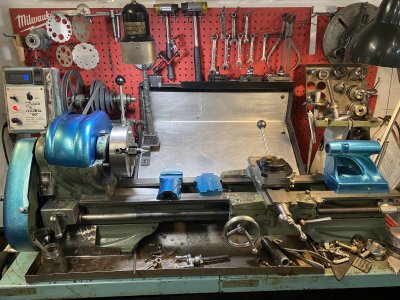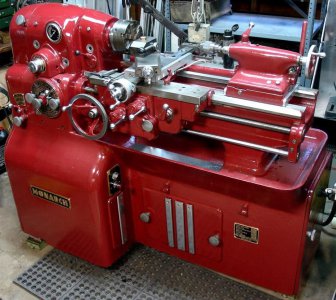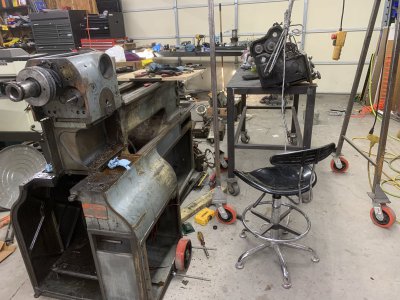I couldn't agree more, that machine looks very attractive... almost like using it would be frowned upon.
If you don't mind me asking, what do you have invested into the external restoration (hours)? What were the stages? Complete tear down, sand, prime, paint, chrome?
Thats not my lathe, I just grabbed the pic off the net. I’m not even sire if thats an oem color for them, most of the pics on the internet are a machine gray color. I can only wish I had the money and room for a 10EE….
But time and money are very dependent on the starting condition of the machine. Mechanical defeciencies (obviously) have to be adressed first, then you get into the cosmetics.
I’ve ”only” got an Atlas TH42 in my garage. I started off learning it and addressing the mechanical issues (mostly from wear). I went so far as to convert it to a dc motor (baldor) and dc speed control (danfoss cycletrol), which added to the cost.
I’m just starting to address the cosmetics, which eats up lots of time with cleaning and prep. Mine is going rust-oleum metallic turquoise:

It’s a bit of a bear to get it “de-oiled” after 70 odd years of total loss lubrication. It’s literally in the metal at this point. Then theres the multiple layers of paint. Takes forever to strip, even using some fairly serious chemicals (paint stripper).
Time wise, I’ve had the lathe in my possession for about 4-5 years now And I’m just getting to the cosmetics.
But I’ve been fixing the mechanical stuff piece by piece as I learned to use the lathe. I would estimate somewhere around 6 months to a year if you were to tear it down and do a complete rebuild/paint, maybe longer if you just have evenings and weekends to work on it. Thats even more true if you’ve never done it before or are not familiar with the model you have. Or if you have to “farm out” things like paint, etc. For something as nice as a 10EE, I’d probably pop the money and farm the painting out to a pro, or possibly consider powder coating. Powdercoating can be a bear though as it often ends up in areas don’t want it (screw threads, bearing surfaces, etc)
At the end of the day I’m hopeful my TH42 will look as good as it works. Where you go with your 10EE is up to you. Get it running and functional first and learn some (at least) basic lathe skills, then consider how far you want to go with it…cosmetics wise.
One thing I will say is that the 10EE is a serious piece of equipment. Which means it can hurt you (or kill you) in a fraction of a second if you don’t know the basic safety rules around a lathe. I’d recommend either reading up on good lathe practices. Or, if you have this in your area, take some weekend or evening shop classes to get some of the basic safety rules in your head.




